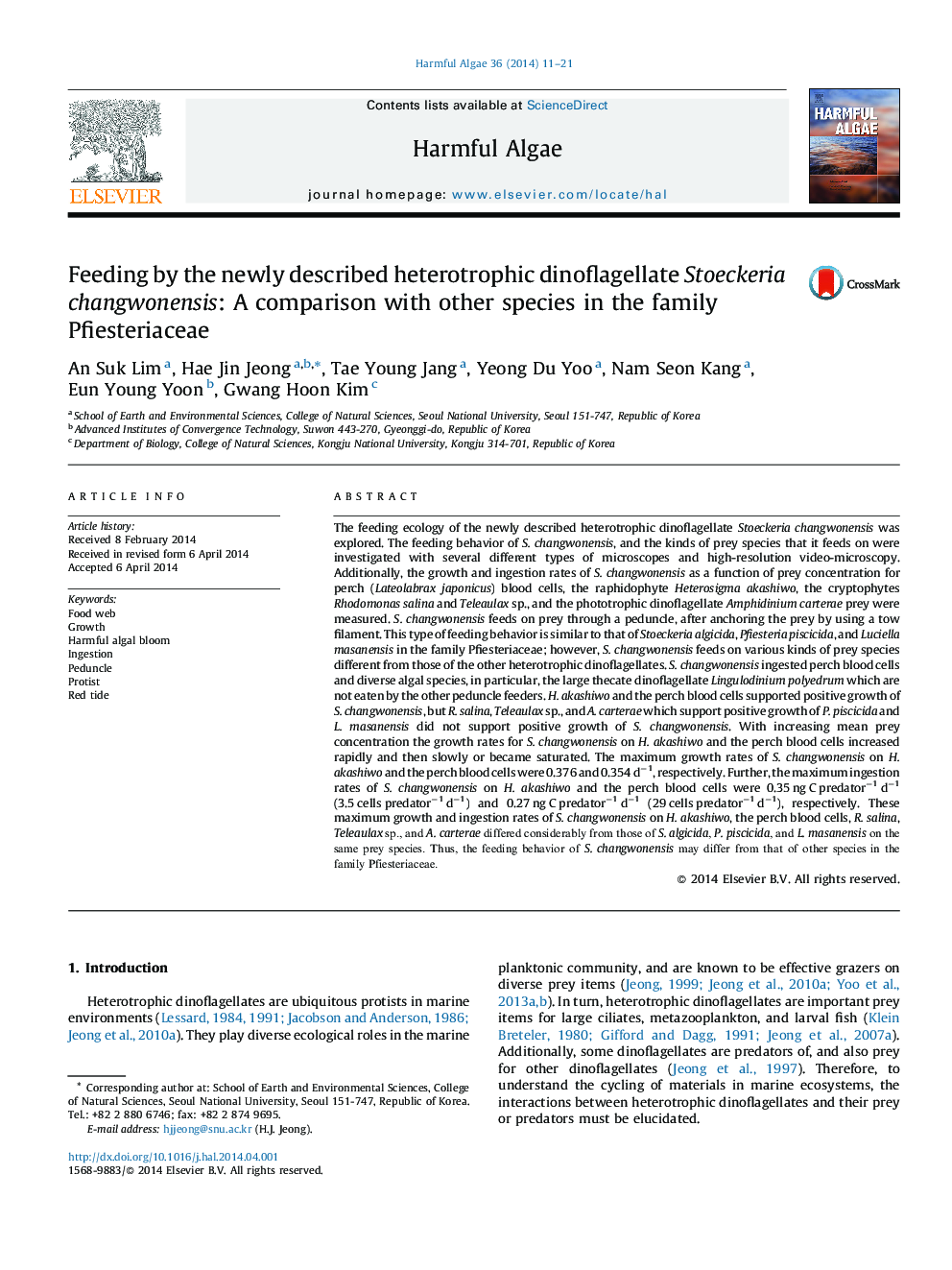| کد مقاله | کد نشریه | سال انتشار | مقاله انگلیسی | نسخه تمام متن |
|---|---|---|---|---|
| 4545357 | 1626935 | 2014 | 11 صفحه PDF | دانلود رایگان |

• Feeding by the newly described dinoflagellate Stoeckeria changwonensis was explored.
• Unlike Stoeckeria algicida, S. changwonensis was able to feed on diverse algal species.
• Only Heterosigma akashiwo and the perch blood cells supported its positive growth.
• Feeding activity of S. changwonensis differs from that of other Pfiesteriacans.
The feeding ecology of the newly described heterotrophic dinoflagellate Stoeckeria changwonensis was explored. The feeding behavior of S. changwonensis, and the kinds of prey species that it feeds on were investigated with several different types of microscopes and high-resolution video-microscopy. Additionally, the growth and ingestion rates of S. changwonensis as a function of prey concentration for perch (Lateolabrax japonicus) blood cells, the raphidophyte Heterosigma akashiwo, the cryptophytes Rhodomonas salina and Teleaulax sp., and the phototrophic dinoflagellate Amphidinium carterae prey were measured. S. changwonensis feeds on prey through a peduncle, after anchoring the prey by using a tow filament. This type of feeding behavior is similar to that of Stoeckeria algicida, Pfiesteria piscicida, and Luciella masanensis in the family Pfiesteriaceae; however, S. changwonensis feeds on various kinds of prey species different from those of the other heterotrophic dinoflagellates. S. changwonensis ingested perch blood cells and diverse algal species, in particular, the large thecate dinoflagellate Lingulodinium polyedrum which are not eaten by the other peduncle feeders. H. akashiwo and the perch blood cells supported positive growth of S. changwonensis, but R. salina, Teleaulax sp., and A. carterae which support positive growth of P. piscicida and L. masanensis did not support positive growth of S. changwonensis. With increasing mean prey concentration the growth rates for S. changwonensis on H. akashiwo and the perch blood cells increased rapidly and then slowly or became saturated. The maximum growth rates of S. changwonensis on H. akashiwo and the perch blood cells were 0.376 and 0.354 d−1, respectively. Further, the maximum ingestion rates of S. changwonensis on H. akashiwo and the perch blood cells were 0.35 ng C predator−1 d−1 (3.5 cells predator−1 d−1) and 0.27 ng C predator−1 d−1 (29 cells predator−1 d−1), respectively. These maximum growth and ingestion rates of S. changwonensis on H. akashiwo, the perch blood cells, R. salina, Teleaulax sp., and A. carterae differed considerably from those of S. algicida, P. piscicida, and L. masanensis on the same prey species. Thus, the feeding behavior of S. changwonensis may differ from that of other species in the family Pfiesteriaceae.
Journal: Harmful Algae - Volume 36, June 2014, Pages 11–21